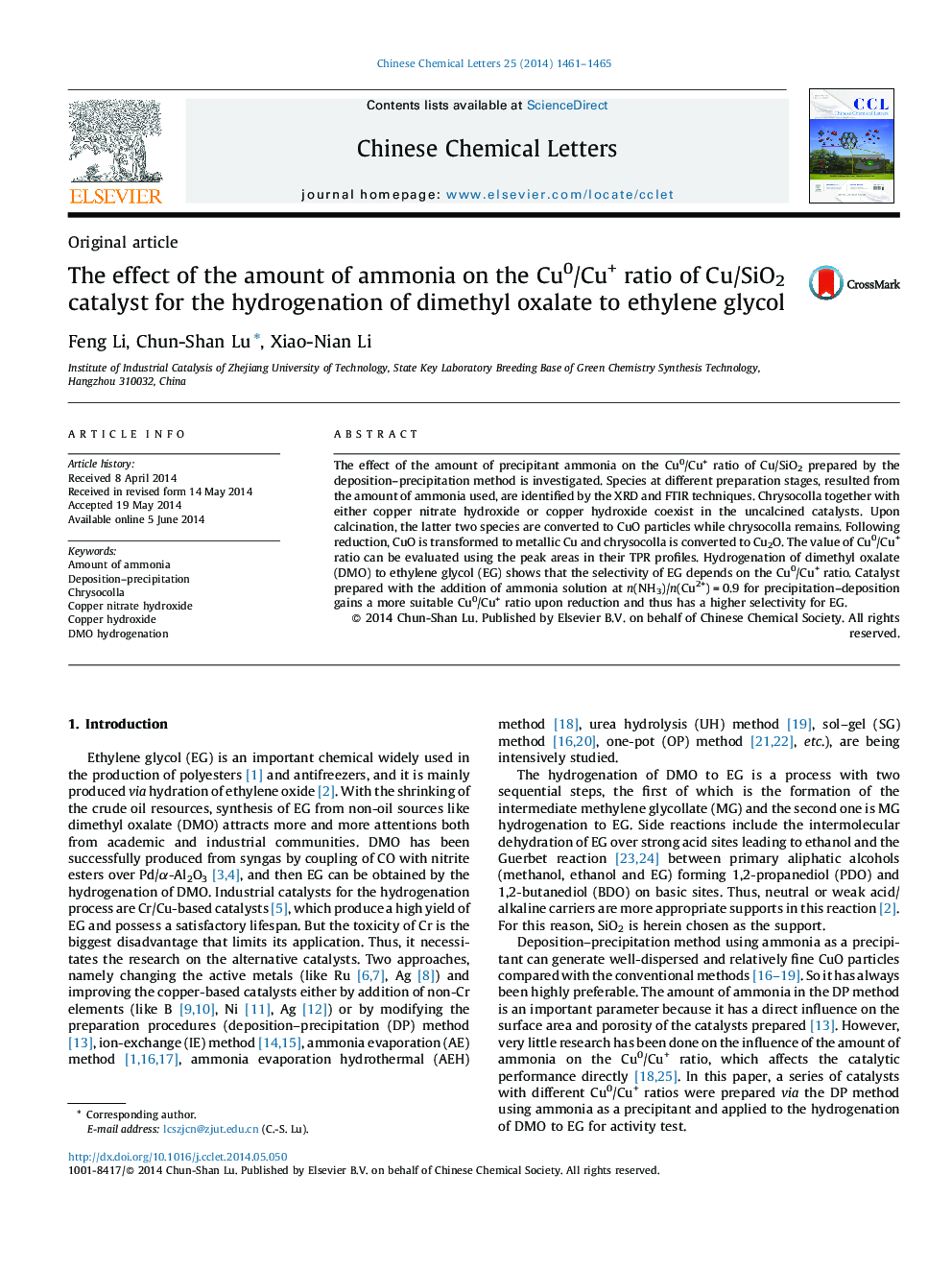| Article ID | Journal | Published Year | Pages | File Type |
|---|---|---|---|---|
| 1254510 | Chinese Chemical Letters | 2014 | 5 Pages |
The effect of the amount of precipitant ammonia on the Cu0/Cu+ ratio of Cu/SiO2 prepared by the deposition–precipitation method is investigated. Species at different preparation stages, resulted from the amount of ammonia used, are identified by the XRD and FTIR techniques. Chrysocolla together with either copper nitrate hydroxide or copper hydroxide coexist in the uncalcined catalysts. Upon calcination, the latter two species are converted to CuO particles while chrysocolla remains. Following reduction, CuO is transformed to metallic Cu and chrysocolla is converted to Cu2O. The value of Cu0/Cu+ ratio can be evaluated using the peak areas in their TPR profiles. Hydrogenation of dimethyl oxalate (DMO) to ethylene glycol (EG) shows that the selectivity of EG depends on the Cu0/Cu+ ratio. Catalyst prepared with the addition of ammonia solution at n(NH3)/n(Cu2+) = 0.9 for precipitation–deposition gains a more suitable Cu0/Cu+ ratio upon reduction and thus has a higher selectivity for EG.
Graphical abstractThe Cu0/Cu+ ratio of Cu/SiO2 synthesized by the deposition–precipitation method using ammonia as a precipitant can be modulated by controlling the amount of ammonia used, and it affects the selectivity of the products of dimethyl oxalate hydrogenation greatly.Figure optionsDownload full-size imageDownload as PowerPoint slide
